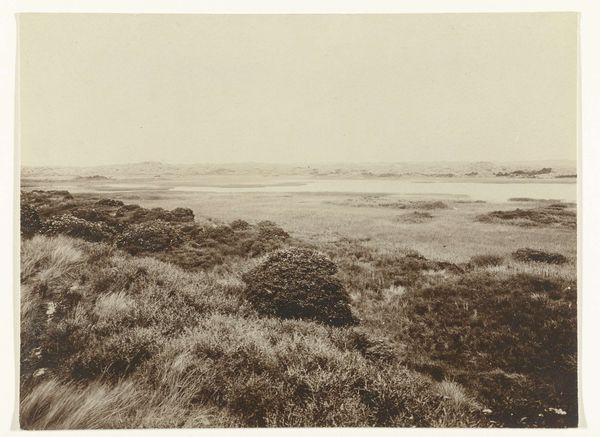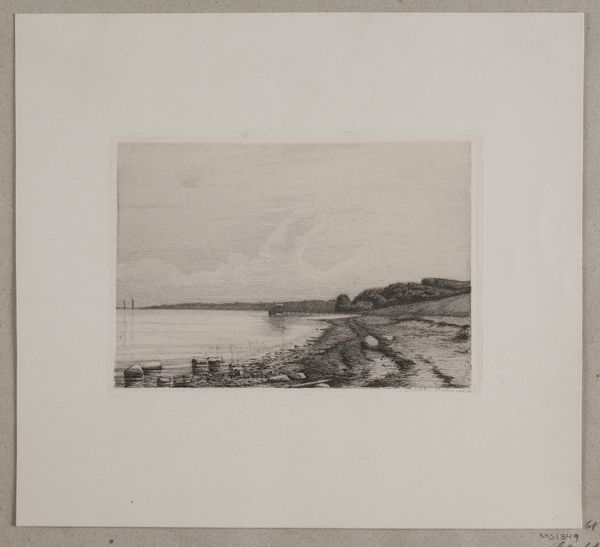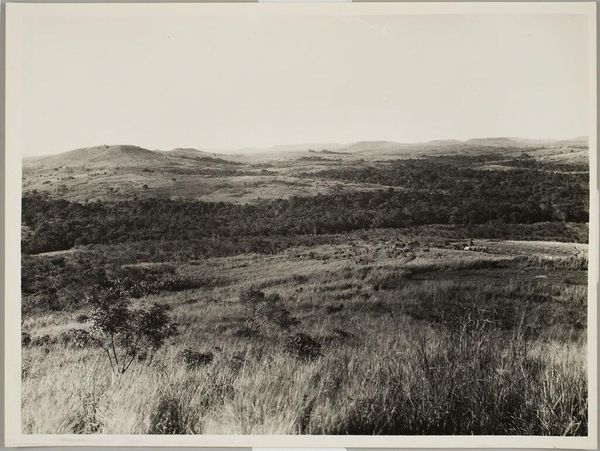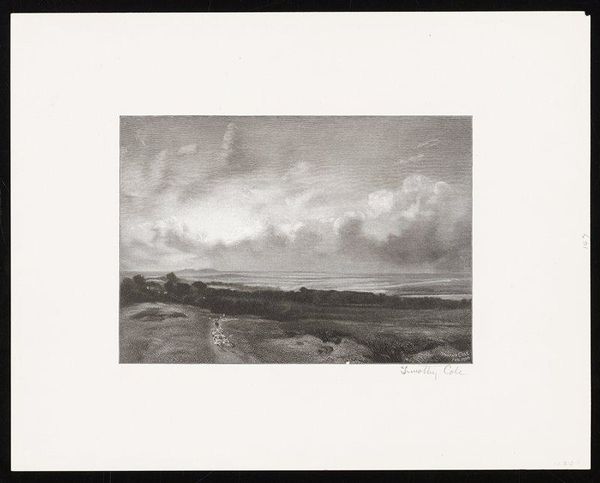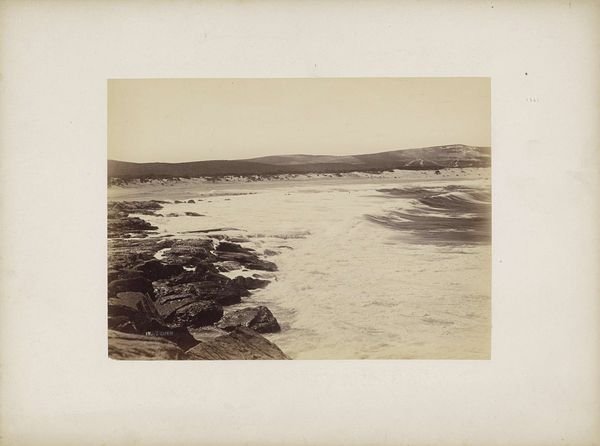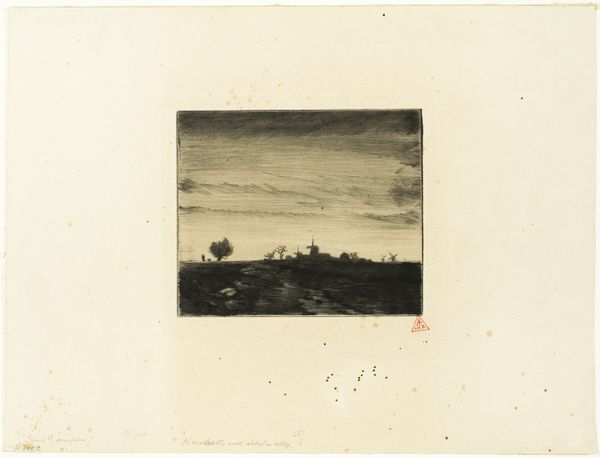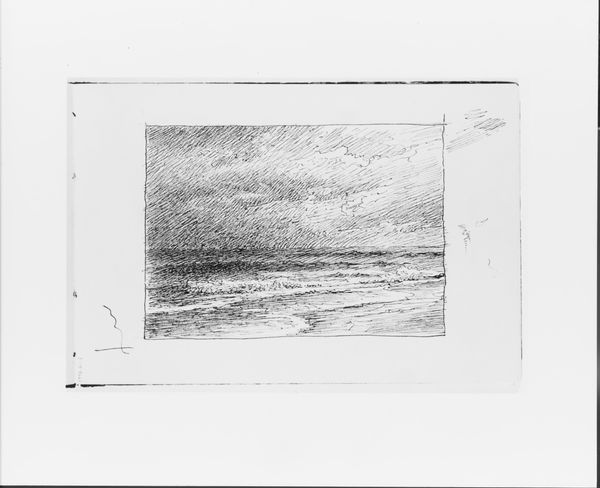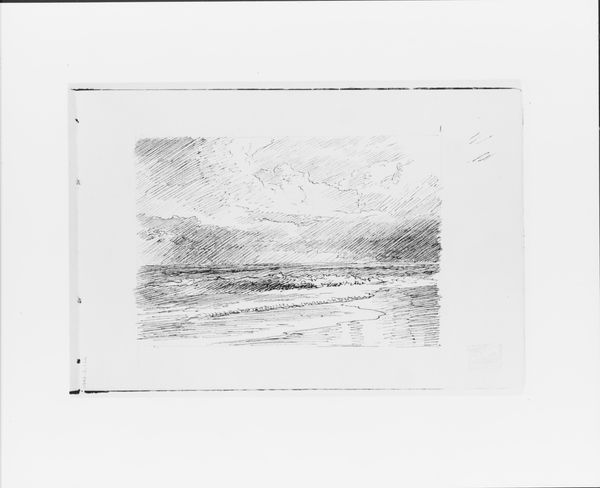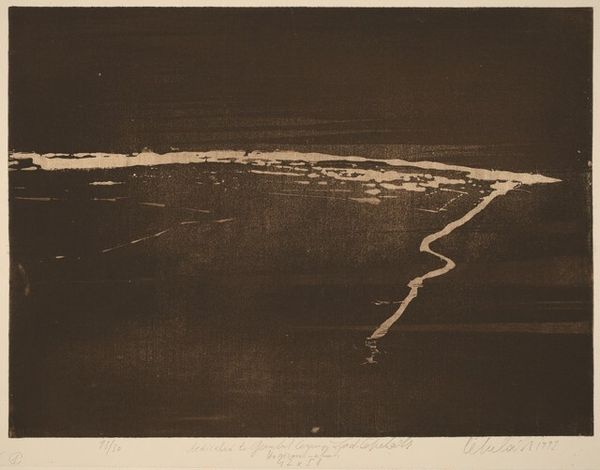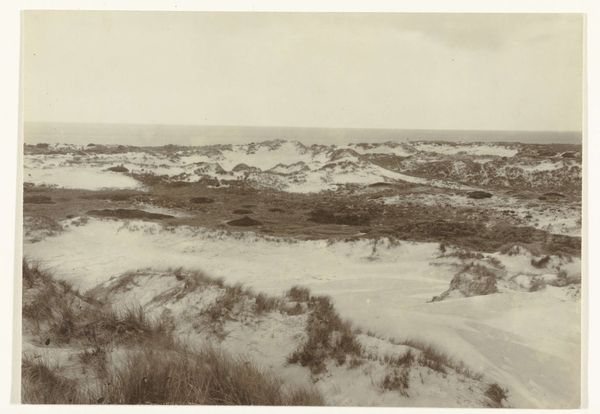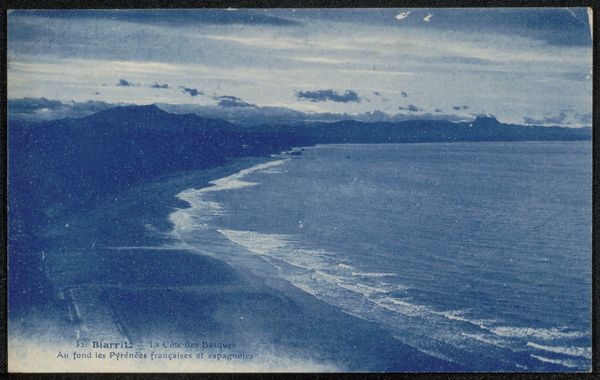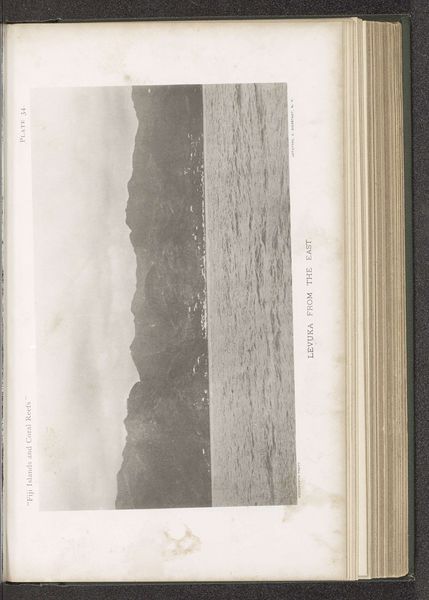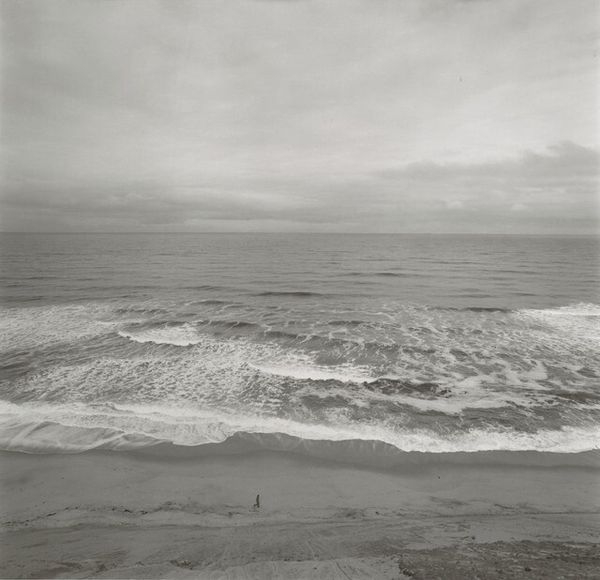
photography, gelatin-silver-print
#
landscape
#
monochrome colours
#
street-photography
#
photography
#
black and white
#
gelatin-silver-print
#
monochrome photography
#
monochrome
#
monochrome
Dimensions: image: 13.3 x 17.3 cm (5 1/4 x 6 13/16 in.) sheet: 20.1 x 25.1 cm (7 15/16 x 9 7/8 in.)
Copyright: National Gallery of Art: CC0 1.0
Curator: Robert Frank’s gelatin silver print, "Mabou on a Cold Day," immediately strikes me with its stark simplicity. The composition is so austere. Editor: It definitely evokes a sense of isolation. Look at that churning sea and the bleak shoreline; it speaks to the marginalization of rural communities. This work was, after all, captured during a period of deindustrialization, of the working classes struggling to survive against the onslaught of the modern economy. Curator: True, but consider the tonal range—the way the light catches the crests of the waves, forming contrasting textures across the surface. Frank masterfully uses the grayscale to create depth and spatial relationships. There is a compositional symmetry; each element seems carefully placed, even if that placement suggests a scene found, not posed. Editor: I disagree. The image exudes spontaneity, a fleeting moment seized rather than a deliberately structured composition. Frank isn’t concerned with capturing picture-perfect landscapes. He's interested in showing us how globalization impacted everyday lives, revealing how late-stage capitalism created profound inequalities in places like Mabou. It underscores themes of economic displacement. Curator: Still, consider the formal qualities of the medium. The graininess, for instance, enhances the emotional resonance; we almost feel the cold wind and hear the crashing waves. The minimalist composition pulls focus to what remains rather than to what has left, echoing loss as much as highlighting persistence. Editor: To push back, that minimalism serves not merely aesthetic ends, but rather lays bare the social and economic bareness of the location itself, right? It isn't enough to examine technical components; you've got to read how art practices engage sociopolitical struggle. Curator: Perhaps it’s a marriage of both. The photographic choices and arrangement generate meaning—meaning that we might all be sensitive to, albeit on varied planes of experience. The emotional force arises not only from Frank's sharp commentary on modern hardship but through the careful orchestration of photographic properties. Editor: Well, considering the social narrative woven with artistic intention—Mabou does speak volumes, silently echoing complex, painful truths. Curator: I concur. Its silence itself speaks to what can't necessarily be shown directly, and leaves viewers with the emotional capacity to create interpretations.
Comments
No comments
Be the first to comment and join the conversation on the ultimate creative platform.
